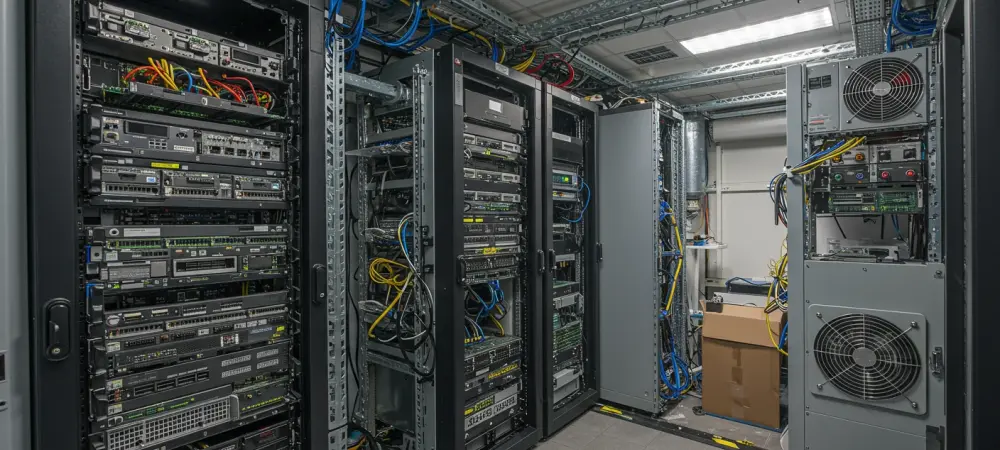In a war-torn nation where power outages and severed internet lines have become grim daily realities, a flicker of hope emerges from halfway across the world. Over a million Ukrainians grapple with disrupted connectivity in 2025, as reported by outage tracker NetBlocks, with Russian attacks relentlessly targeting the national grid. Amid this chaos, Japan’s Internet Initiative Japan (IIJ) has stepped forward with an innovative solution—micro data centers (MDCs)—to shore up Ukraine’s crumbling infrastructure. This isn’t just a story of technology; it’s a testament to global solidarity and the power of resilience in the face of adversity.
Why Ukraine’s Digital Darkness Matters to the World
The scale of Ukraine’s infrastructure crisis is staggering. Coordinated drone and missile strikes have left vast swaths of the population without electricity or internet access, crippling communication and essential services. This digital darkness doesn’t just isolate communities—it hampers emergency responses, economic activity, and even the ability to stay informed during conflict. The ripple effects extend beyond borders, raising urgent questions about the vulnerability of critical systems in war zones and the global responsibility to act.
International support has become a lifeline for Ukraine, with nations and corporations alike recognizing the stakes. The devastation of telecom and power networks isn’t merely a local issue; it’s a stark reminder of how interconnected modern societies are. Supporting Ukraine’s recovery is not just humanitarian—it’s a stand against the broader threat to global stability when infrastructure collapses under siege.
Inside IIJ’s Mission to Restore Connectivity
At the heart of this effort lies a strategic partnership between IIJ and the Japan International Cooperation Agency (JICA), formalized through a collaboration announced last year. IIJ has deployed four MDCs to Ukraine, split between two key sectors: telecommunications and electric power. Two indoor DX edge Pro units serve a telecom provider, offering backup systems and geographical redundancy across undisclosed cities, while two outdoor DX edge Hut units aid an electric power provider by monitoring substations critical to the grid.
This targeted deployment addresses immediate needs with precision. With Ukraine facing escalating attacks on its infrastructure, the timing of this aid couldn’t be more crucial. These compact, modular data centers are designed to operate in harsh conditions, ensuring that even amidst conflict, vital services remain online. IIJ’s technology provides a backbone for communication and energy monitoring, helping to stabilize systems under constant threat.
The initiative also showcases a blend of innovation and adaptability. By placing these units in strategic, undisclosed locations, the project maximizes impact while minimizing risk. It’s a calculated move to fortify Ukraine’s essential networks, demonstrating how niche technology can play a pivotal role in crisis response.
Expertise Fueling a Vision for Recovery
IIJ brings a wealth of experience to this endeavor, having been Japan’s first internet service provider since its founding over three decades ago. With a presence in 17 locations domestically and five internationally, the company has a proven track record of delivering cutting-edge solutions. Its partnership with ZellaDC for modular container and MDC technology, already operational in Japan and Iceland, adds a layer of credibility to this mission.
Beyond hardware, IIJ’s involvement reflects a dual purpose: providing immediate aid while exploring market potential in Ukraine. This balance of humanitarian intent and business strategy was highlighted during a Japan-Ukraine conference earlier in the collaboration timeline, where recovery and economic growth were central themes. Supported by JICA, this effort aligns with a broader governmental push to rebuild, positioning IIJ as a key player in international reconstruction.
Insights from industry leaders underscore the significance of this project. IIJ’s commitment to transferring operational know-how to local providers signals a focus on long-term impact. This isn’t just about installing equipment—it’s about empowering Ukrainian entities to sustain and expand these systems, creating a model of resilience that others might follow.
Practical Steps Toward Lasting Resilience
The scope of IIJ’s contribution extends far beyond the physical delivery of MDCs. A critical component involves training local telecom and power providers in the operation and maintenance of these units. This knowledge transfer ensures that Ukraine isn’t just receiving aid but building capacity to manage its infrastructure independently, even under duress.
Additionally, IIJ is conducting a thorough assessment of local needs and market dynamics. This strategic evaluation aims to lay the groundwork for sustained engagement, potentially opening doors for other tech firms to contribute to conflict-zone recovery. By focusing on redundancy systems and real-time monitoring capabilities, the project offers practical solutions to safeguard against future disruptions, setting a precedent for scalable intervention. The framework being developed here could serve as a blueprint for similar initiatives worldwide. It emphasizes the importance of tailoring technology to specific regional challenges while fostering partnerships between public and private sectors. Such an approach ensures that aid is not only immediate but also builds a foundation for enduring stability.
A Legacy of Hope and Collaboration
Looking back, IIJ’s deployment of micro data centers in Ukraine stood as a beacon of innovation during a dark chapter. The initiative, supported by JICA, not only addressed urgent gaps in telecommunications and power but also planted seeds for future growth through knowledge sharing and strategic planning. It highlighted how technology, when paired with global cooperation, could turn the tide in even the most dire circumstances.
Reflecting on this effort, the path forward became clear: Scaling such interventions through broader international partnerships remained essential. Encouraging more tech companies to engage in conflict-zone recovery, while governments facilitate these efforts, could redefine how nations rebuild. The focus must shift toward sustainable models that empower local communities, ensuring that resilience isn’t just a temporary fix but a lasting legacy.

